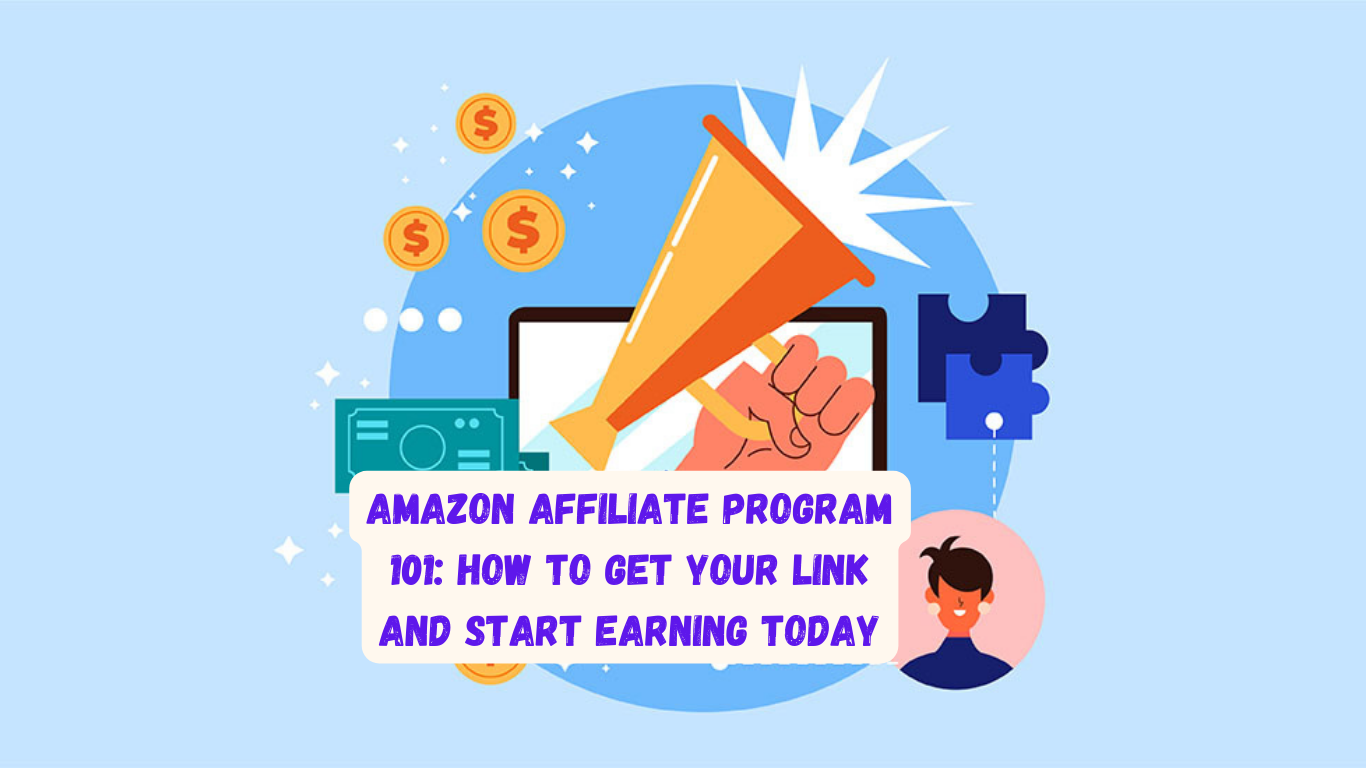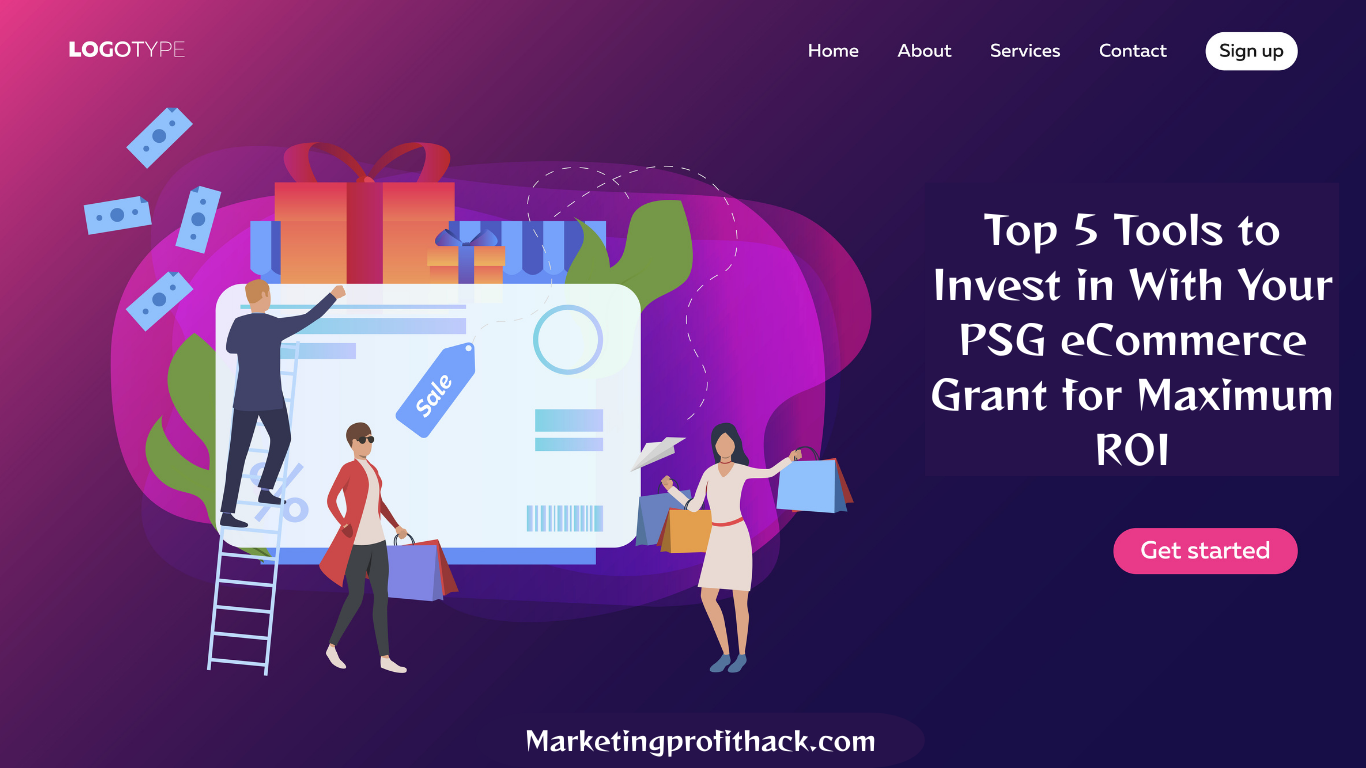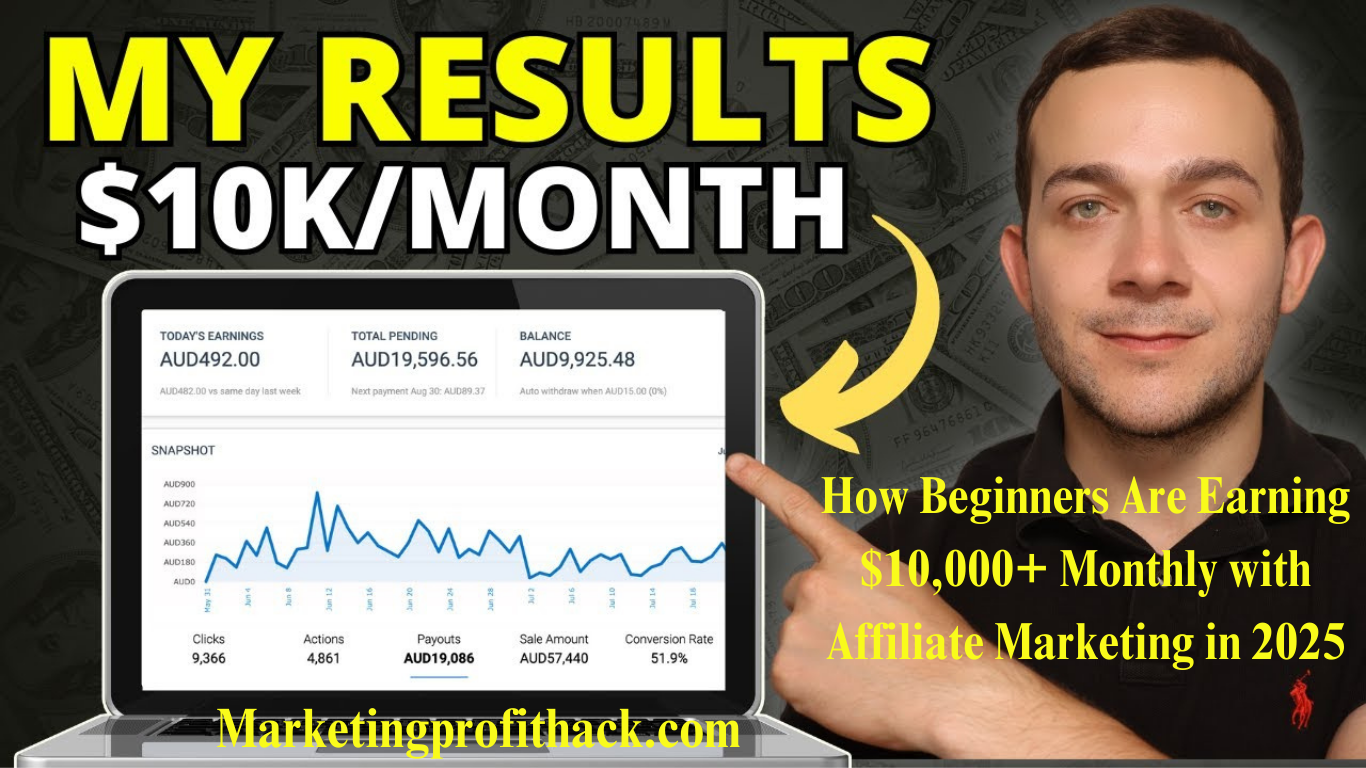How to Make Money Online by Starting a Niche Blog: From $0 to Side Income

Welcome to my article "How to Make Money Online by Starting a Niche Blog: From $0 to Side Income". So, you've heard the whispers - "Blogging is dead," they say. Yet somehow, bloggers are still out here sipping iced lattes on balconies in Bali while their bank accounts grow in their sleep. Magic? Nope. Just the power of niche blogging done right.
If you're broke, bored, or just tired of pretending your 9–5 job is "totally fulfilling," starting a niche blog might just be your ticket to making real money online. And before you think you need to be a tech genius, a full-time writer, or someone with 100,000 Instagram followers - relax. You don't need to be the next Hemingway or own a MacBook covered in motivational stickers. You just need a specific topic, a bit of patience, and the willingness to write about what you (kind of) know.
In this blog, we'll break down how to go from zero dollars and zero readers to earning a steady side income with your very own niche blog. We're talking about the kind of blog that ranks on Google, earns through affiliate links, sells digital products, or gets you sponsorships - not a digital diary that no one reads except your cat. Whether your niche is minimalist home decor, mushroom foraging, or budgeting for chaotic millennials, we'll show you how to pick it, build it, grow it, and most importantly - monetize it. Ready to blog your way to the bank? Let's dive in.
Proven Formula for $50-$100 Daily Income with 0 COST - Watch This FREE Video >>
Find Your Profitable Niche: Where Passion Meets Demand
If you want to make money blogging, the first question (and probably the biggest headache) is: What the heck should I blog about? This isn't just about picking something you like - it's about finding the sweet spot where your passion meets real audience demand and money-making potential.
What Exactly Is a Niche Blog?
Imagine you're at a huge party with hundreds of conversations happening at once. You could shout your message across the room and hope someone listens (spoiler: they won't), or you can join a smaller group that's already interested in what you have to say. That's a niche blog - a blog that targets a specific, focused topic or audience.
For example, instead of "fitness," which is as broad as the ocean, you might blog about "postpartum yoga for new moms," "vegan bodybuilding," or "HIIT workouts for seniors." By zoning in, you create content that speaks directly to a dedicated crowd, making it easier to build trust and stand out.
Why Does Going Niche Actually Work?
Search engines love specificity.
Google's goal is to match searchers with the best, most relevant answer. When you cover a very specific topic deeply, Google sees you as an expert and is more likely to rank your content higher.
You build authority and community faster.
People don't just want general info; they want your insight on their very specific problem. When your content resonates, readers come back, subscribe, and share.
Monetization gets easier and more effective.
When you know your audience's pain points and desires, you can promote products, services, or ads that solve their exact problems. That means higher conversions and more income.
How to Find That Perfect, Profitable Niche (Even If You're Starting at Zero)
Step 1: Start with Self-Reflection
Don't just pick a niche because it's "hot" or "profitable." Ask yourself:
What am I genuinely interested in? (Yes, even your obsession with collecting vintage fountain pens counts.)
What skills or knowledge do I already have?
What problems have I solved that others struggle with?
What topics can I see myself blogging about consistently for months or years?
Passion keeps you motivated on the tough days when traffic is slow and the Wi-Fi is spotty.
Step 2: Validate Your Ideas With Research
Just because you love something doesn't mean it has a big enough audience or earning potential. Here's how to check:
Google Trends: Type your niche ideas to see interest over time. Look for steady or rising trends, not steep declines. For example, "vegan recipes" might be steady, but "fidget spinners" peaked and crashed.
Keyword Research Tools: Use free tools like Ubersuggest, AnswerThePublic, or Keywords Everywhere to find how many people search for your topics monthly and related questions. The more specific the keywords (long-tail), the less competition and better chance to rank.
Marketplaces & Forums: Check Amazon bestsellers, Etsy's trending categories, or niche forums and Reddit communities. Are people buying products and engaging in discussions related to your niche? This shows demand and spending power.
Social Media Groups: Join Facebook groups, LinkedIn groups, or niche-specific communities. Are people active, asking questions, and sharing? If yes, you've found a living, breathing audience.
Step 3: Evaluate Competition - The Goldilocks Zone
Competition isn't always a bad word. A niche with zero competition might mean no demand. Too much competition means it will be hard to get noticed.
Use Google to search your niche keywords. Check the top-ranking sites: Are they big brands or small bloggers?
Look at their content quality - can you do better or offer a fresh perspective?
Use Moz's or Ahrefs' free tools to analyze domain authority and keyword difficulty, if you want to get technical.
Aim for a niche with moderate competition - enough proof there's money, but not so crowded that you drown.
Step 4: Refine and Micro-Niche
If your niche feels too broad, narrow it down. Instead of "personal finance," try "budgeting for freelancers" or "saving money as a college student." Micro-niches attract more targeted traffic and allow you to become the go-to expert quickly.
Bonus: The Passion-Demand-Profit Triangle
The most successful niche blogs live where three things overlap:
PassionAudience DemandMonetization PotentialWhat you loveWhat people search forWhat people spend money on
If you try to monetize a niche with no demand or little spending potential, you'll struggle no matter how passionate you are. Conversely, if you pick a hot market but hate the topic, you'll burn out fast. Balance is key.
FAQ: Finding Your Profitable Niche
Q1: How do I know if my niche idea is too broad or too narrow?
Try brainstorming 50 potential blog post titles related to your niche. If you hit a wall before 20, it might be too narrow. If you're overwhelmed, try narrowing your focus to a more specific sub-topic.
Q2: Can I change my niche after starting?
Absolutely! Many bloggers pivot once they find what works or what they enjoy more. Just try to pick a niche with staying power initially to avoid too many course corrections.
Q3: How important is keyword research in choosing a niche?
Very important! It helps you know if people are actually searching for your topic and what specific questions they want answered. But don't let keyword data override your passion entirely.
Q4: What if my niche has low search volume but a very passionate audience?
That can still work, especially if the audience spends money and engages deeply (think luxury collectibles, highly specialized hobbies). Focus on building strong community connections.
Q5: How long should I spend choosing my niche before starting the blog?
Don't overthink it! Spend a few days doing research, then start blogging. You'll learn and refine as you go. Perfection is the enemy of progress.
Set Up Your Blog on a Budget: $0 Options That Actually Work
Starting a blog with zero budget isn't just a pipe dream - it's a totally doable way to test your ideas, build an audience, and even start making money before you invest a single dime. But here's the truth: free doesn't always mean easy or perfect. You'll need to be savvy about the choices you make, understand the trade-offs, and know exactly how to maximize what these free tools offer.
Why Starting for Free Is the Smartest Move You Can Make
Launching your blog with no upfront costs is like dipping your toes into the water before diving in. It helps you:
Validate your niche - See if people care about your topic before investing in domains or hosting.
Build confidence and skills - Learn blogging basics, SEO, and content creation without pressure.
Test content ideas and marketing strategies - Experiment to find what resonates.
Avoid financial risk - You don't have to break the bank if blogging isn't your jam.
But, starting free also means embracing certain limits, so let's be smart about how to use the best platforms and tools.
The Deep-Dive Guide to Free Blogging Platforms That Deliver Real Value
1. WordPress.com - The Crowd Favorite
What it offers: Reliable platform, dozens of free themes, built-in SEO basics, automatic backups.
Limitations: Your blog URL looks like yourblog.wordpress.com, you can't install custom plugins or monetize fully without paid plans, and WordPress may show ads.
Pro tip: Spend time customizing your free theme, and learn WordPress SEO basics. Use categories and tags wisely to organize content.
2. Blogger (by Google) - Old School but Gold
What it offers: Completely free hosting, easy Google integration (Analytics, Adsense), simple interface.
Limitations: Limited themes and design flexibility, URL looks like yourblog.blogspot.com.
Pro tip: Use custom domain mapping (you can buy a domain later and connect it), and customize your layout with gadgets/widgets.
3. Medium - For Writers Who Want to Focus on Words
What it offers: Beautiful minimalistic layout, built-in audience, partner program for earning.
Limitations: No full control over branding or SEO, and audience belongs to Medium, not you.
Pro tip: Use Medium to build authority and funnel readers to your own blog or email list.
4. Wix Free Plan - Visual Drag-and-Drop Builder
What it offers: Easy to build with, lots of templates, no coding needed.
Limitations: Wix ads on your site, subdomain like username.wixsite.com, limited SEO control.
Pro tip: Focus on niche visuals and branding, then upgrade if you want a custom domain and ad removal.
5. Substack - For Newsletter-Style Blogging & Monetization
What it offers: Free to start, email list integrated, readers can subscribe for paid content.
Limitations: More suited for newsletter format than traditional blog posts.
Pro tip: Use Substack if your niche lends itself to regular updates, personal stories, or exclusive insights.
How to Build a Free Blog That Doesn't Look Like a Free Blog
Choose a professional-looking theme: Avoid clutter and flashy graphics. Simple is powerful.
Create essential pages: At minimum, have an About page that tells your story and niche, a Contact page, and a Privacy Policy (templates available online).
Add high-quality images: Use free resources like Unsplash, Pexels, and Canva to create visuals that complement your posts.
Customize navigation: Make it easy for visitors to find key content (categories, recent posts, popular posts).
Use free SEO tools: Install Google Search Console and Google Analytics to track visitors and optimize your blog's performance.
Set up a free email list: Tools like MailerLite and Mailchimp offer free plans to collect emails and start nurturing your audience early.
What You CAN'T Do on Free Blogs (But Can Live Without at First)
Own your domain name (unless you pay for it).
Install custom plugins or advanced SEO tools.
Remove platform ads or branding.
Full control over site speed and security.
Unlimited monetization options (some affiliate programs or ads require self-hosted blogs).
Remember, these are hurdles for future upgrades, not deal-breakers when starting out.
When and How to Upgrade for Maximum Impact
Proven Formula for $50-$100 Daily Income with 0 COST - Watch This FREE Video >>
Domain name: Buy your own domain ($10-$15/year) as soon as your blog gains traction. It builds credibility and boosts SEO.
Hosting: When your traffic grows, move to a self-hosted WordPress.org site for full control, flexibility, and monetization freedom. Hosting costs as low as $3/month.
Premium themes/plugins: Upgrade your site's design and functionality with paid themes and plugins tailored for SEO, speed, and conversions.
Email marketing: Upgrade email service plans as your list grows to unlock automation and advanced analytics.
FAQ: Setting Up Your Blog on a Budget - The Deep Answers
Q1: Is it okay to start blogging on a free platform and later switch to paid? Will I lose my content?
Absolutely! Most platforms offer export tools to migrate your content. For example, WordPress.com lets you export your posts and pages easily. Switching is a bit technical but many tutorials and migration services make it painless.
Q2: How much time should I invest in customizing a free blog before publishing?
Don't get stuck in perfection paralysis! Spend a few hours picking a clean theme, creating key pages, and uploading your first posts. You can tweak design as you go. Content is king - focus on writing great posts.
Q3: What if I want to monetize immediately but I'm on a free platform?
Some free platforms restrict certain monetization methods (like Google AdSense on WordPress.com free plan). Blogger and Medium are more flexible. Consider affiliate marketing with products that don't require complex setups or build your email list to sell your own products later.
Q4: Can I use free blogging platforms to build an email list?
Yes! You can embed signup forms from free email marketing services like MailerLite or Mailchimp, even on free blogs. Building an email list early is one of the smartest moves you can make.
Q5: Are free blogs safe and reliable? Could I lose everything?
Free platforms are generally reliable and backed by big companies. However, because you don't control your hosting or backups, it's wise to keep your own copies of all content and images. Regularly export your posts or save drafts offline.
Q6: Will free blogs affect my blog's credibility or SEO negatively?
There can be a slight disadvantage because free blogs often have subdomains (e.g., yourblog.wordpress.com), which aren't as strong for SEO as custom domains. But solid content, good SEO practices, and consistent posting can still rank well and build credibility quickly.
Final Pro Tip: Treat Your Free Blog Like a Business
Even if it's free, treat it seriously:
Set a publishing schedule.
Engage with your readers through comments and social media.
Track performance and adjust strategy.
Keep learning about SEO, writing, and marketing.
By investing your time and energy wisely, a $0 blog can become a powerful side income engine and a launchpad to bigger things.
Create Content That Ranks and Converts
Because writing for fun is cool, but writing that pays the bills? Even cooler.
So you've got your shiny new blog and a niche you're passionate about - now what? Time to fill it with content. But not just any content. We're talking about content that ranks on Google and convinces your readers to take action - whether that's joining your email list, buying a product, or simply thinking, "Whoa, this person gets me."
Creating high-ranking, high-converting content is part art, part science, and part caffeinated late-night writing session. Let's break it all down step-by-step.
What Does "Rank and Convert" Really Mean?
Before we hit the keyboard like it owes us money, let's clarify:
Rank = Show up on the first page of Google when someone types in "best budget travel backpacks" or "how to start a blog with no money."
Convert = Get your reader to do something - click a link, download a freebie, buy a product, share your post, or subscribe.
Ranking brings in the traffic. Converting makes the traffic matter.
Step-by-Step: How to Create Blog Content That Gets Found and Gets Results
1. Do Keyword Research (No PhD Required)
Use tools like:
Ubersuggest (freemium)
Google's "People Also Ask" section
AnswerThePublic
LowFruits.io (for low-competition goldmines)
Look for long-tail keywords like:
"how to lose weight without going to the gym"
"best free blogging platforms for beginners"
Pro Tip: Don't go for the highest-volume keyword right away. Aim for the "low-hanging SEO fruit" - phrases with low competition but solid intent.
2. Craft Killer Headlines (Clickbait-Free but Irresistible)
Your title is the first impression. Make it count.
Try using:
Numbers ("7 Easy Steps…")
Brackets ([Free Guide], [Case Study])
Emotion or curiosity ("You Won't Believe This…" - okay, maybe dial it down a notch)
Examples:
"How I Made My First $1,000 Blogging From a Couch in My Pajamas [No Tech Skills Needed]"
"The Beginner's Guide to Affiliate Marketing with $0 Budget [Step-by-Step]"
3. Write for Humans, Optimize for Robots
Use your target keyword in:
Title (H1)
First 100 words
1–2 subheadings (H2s)
Naturally throughout the content
Meta description (aka the blurb under your title in Google)
BUT don't stuff keywords. If it feels awkward, Google will know, and your readers will bounce faster than a rubber ball.
4. Use Clear Formatting for Maximum Readability
Remember, people skim. So make your post skimmer-friendly:
Use H2s and H3s for structure
Keep paragraphs short (2–4 lines max)
Use bullet points and bold for emphasis
Add internal links to other blog posts
Include visuals (screenshots, infographics, GIFs if you're feeling spicy)
5. Add a Clear Call to Action (CTA)
After readers finish your masterpiece, they should know what to do next.
Examples:
"Download the free checklist here →"
"Want more traffic? Grab my SEO starter kit."
"Click here to get your first month of hosting free."
Make it benefit-driven. Tell them why they should care.
6. Update Your Content Regularly
The internet changes faster than TikTok trends. Stay relevant.
Update broken links
Refresh old stats
Add new tips or tools
Re-optimize old posts with better keywords
FAQ: Creating Content That Ranks and Converts
Q1: How long should a blog post be to rank well on Google?
Quality beats quantity, but ideally 1,500–2,500 words. It should be long enough to fully answer the reader's question but not so long they need a snack halfway through.
Q2: How often should I publish content?
Consistency is key. Start with 1 post per week and scale up if possible. It's better to publish one great post per week than five rushed ones.
Q3: What's the best type of content to create for conversions?
How-to guides, listicles, tutorials, comparison posts (X vs Y), and case studies work wonders. Make sure they include a clear CTA.
Q4: Can I rank on Google without backlinks?
Yes, especially with low-competition keywords. Backlinks help, but great on-page SEO, keyword targeting, and quality content can rank without them.
Q5: How do I track if my content is converting?
Use tools like:
Google Analytics (set up goals like sign-ups or button clicks)
Heatmaps (via Hotjar or Microsoft Clarity)
UTM links to track specific campaigns
Email sign-up rates and affiliate dashboard clicks
Q6: What if I'm not a good writer?
You don't need to be Shakespeare - just be helpful, clear, and real. Use tools like Grammarly, Hemingway App, and ChatGPT to polish your posts. Write how you talk (minus the "ums" and "likes").
Final Thought:
Ranking and converting aren't about tricking Google or readers - they're about being genuinely useful. Help solve problems, answer questions better than your competition, and deliver value. Sprinkle in personality, a dash of humor, and a CTA that doesn't sound like a used car ad, and you've got content that works.
Want a content template or SEO checklist to use for every blog post? Let me know - I can whip one up for you!:
Grow Your Blog Traffic Without Spending a Dime
Because your wallet's on a diet but your blog wants to feast.
So, you've got your blog set up, a few juicy posts published, and… crickets. Zero traffic. Nada. You refresh your Google Analytics like it's a slot machine, hoping today's the day the internet gods smile upon you.
Sound familiar? Don't worry - you're not alone, and you don't need a fat ad budget to change that.
Growing blog traffic without spending money is absolutely possible. It takes time, strategy, and a little creative hustle. Here's how to turn your blog into a traffic magnet - no dollars, just smarts.
1. Leverage the Power of SEO (a.k.a. Your Free Traffic Engine)
Search Engine Optimization (SEO) isn't just for tech geeks in glasses. It's how regular bloggers get seen by people actually searching for what they're writing about.
Here's how to do it free:
Use free keyword tools like Google Search Console, Ubersuggest (freemium), and AnswerThePublic
Target long-tail keywords like:
"how to start a food blog for beginners"
"free tools to grow a blog in 2025"
Make sure your posts use proper formatting (H1, H2, meta description, etc.)
Optimize old posts regularly to keep them fresh and rank-worthy
SEO is like planting seeds - slow at first, but once it starts growing, it won't stop.
2. Join Niche Communities and Forums (Without Spamming!)
Get involved where your audience hangs out:
Reddit subreddits (e.g., r/blogging, r/personalfinance)
Quora
Facebook groups
Discord channels
Indie communities like GrowthHackers or IndieHackers
Drop value bombs. Don't just say, "Hey read my blog!" Instead, answer questions and then link to your blog if it genuinely helps.
You'll gain trust, build relationships, and sneak in traffic like a ninja.
3. Repurpose and Cross-Post Your Content
Stretch your content like a yoga master:
Turn blog posts into carousels on Instagram
Break down listicles into Twitter/X threads
Record a quick TikTok or YouTube Short summarizing your tips
Share quotes, stats, or quick wins on LinkedIn
Each format opens up a new audience, and you've already done the hard part - writing the blog post.
4. Collaborate With Other Bloggers (For Mutual Benefit)
Teamwork makes the traffic dream work.
Ideas:
Guest post swaps
Link insert trades ("I'll link to your SEO guide, you link to my Pinterest tips?")
Email shoutouts or social cross-promotions
Just reach out politely, offer something of value, and don't be afraid of hearing "no." Every "yes" can bring in a whole new stream of eyeballs.
5. Build and Nurture Your Email List
Even if you only have 3 subscribers (hi Mom!), start emailing them.
Use:
Free email platforms like MailerLite or ConvertKit (free tiers)
Lead magnets like checklists, mini-courses, or swipe files
Consistent value-packed emails (not just "New blog post!" announcements)
Email = traffic on demand. And you own your list - no algorithm drama.
Proven Formula for $50-$100 Daily Income with 0 COST - Watch This FREE Video >>
FAQs: Free Blog Traffic Strategies
Q1: How long does it take to get traffic from SEO?
It depends on your niche and keywords, but for new blogs, expect 3–6 months to see consistent traffic. Keep publishing quality content and updating old posts.
Q2: Is Pinterest still good for traffic?
Yes, especially for visual or lifestyle niches (recipes, DIY, fashion, travel). Pinterest acts more like a search engine than a social platform.
Q3: How often should I promote my blog content?
At least 2–3x per week across your chosen platforms. Don't be shy about resharing older posts - most people missed them the first time.
Q4: Should I use Medium or LinkedIn to republish blog posts?
Yes! Just add a canonical link to the original post (to avoid SEO duplication penalties). These platforms already have built-in audiences.
Q5: What's the best traffic source for beginners?
Google (via SEO) for long-term sustainability. Social platforms (like Pinterest, Twitter, Reddit) for quicker wins and engagement.
Q6: What if I'm not on social media?
Focus on SEO, guest posting, and community forums. You can still drive traffic by being active in niche-specific spaces online.
Final Words:
You don't need to burn cash to build traffic - you just need to be strategic, consistent, and occasionally shameless (in a classy way). Focus on value, show up where your audience lives, and use the tools you already have: your content and your voice.
Traffic will follow. And yes, one day soon, you'll check Google Analytics and see more than just your own visits.
Monetize Your Niche Blog: Turning Pageviews into Paydays
Because passion is great - but passive income is even better.
So you've poured your heart, soul, and a borderline unhealthy amount of coffee into your niche blog. Your traffic is climbing (maybe not "viral" yet, but hey - you're on the map). Now the big question: how do you actually make money with this thing?
Great news - there's more than one way to skin this digital cat. And no, you don't need a million monthly views to start earning. You just need the right mix of traffic, trust, and a monetization method that fits your niche like yoga pants on a Sunday morning.
Here's your roadmap to blogging for bucks - starting from $0 and scaling to "Wait, is this my full-time job now?"
Display Ads: Get Paid for Eyeballs
Best for: Blogs with consistent traffic (1,000+ views/month) and general-interest content.
Start with Google AdSense (easy entry, low payout)
Graduate to Ezoic or Mediavine once your traffic grows
Place ads smartly - between paragraphs, not on your reader's soul
Pro Tip: Don't overdo it. Your blog shouldn't look like Times Square at midnight.
Affiliate Marketing: Recommend and Earn
Best for: Bloggers who write reviews, how-tos, or product comparisons.
Join affiliate networks: Amazon Associates, ShareASale, Impact, ClickBank
Write honest content: "Top 5 Tools I Use for X" or "This One Product Saved Me 20 Hours a Week"
Use comparison tables and CTAs ("Click here to grab your free trial!")
Pro Tip: Promote products you actually use and trust. Readers can smell inauthenticity like last week's leftovers.
Digital Products: Create Once, Sell Forever
Best for: Creators who love teaching, designing, or building.
Sell ebooks, templates, checklists, or courses via Gumroad, Payhip, or your own site
Make it super specific to your niche (e.g., "30-Day Keto Meal Plan for Beginners" or "Blog SEO Checklist for Dog Trainers")
Use email sequences to promote them on autopilot
Pro Tip: Your first product doesn't have to be fancy - it just has to solve a problem.
Sponsored Content: Get Paid to Publish
Best for: Bloggers with a defined audience and some traffic credibility.
Collaborate with brands for reviews, tutorials, or shout-outs
Set a media kit with pricing (even if it's just $50/post to start)
Pitch brands directly or sign up on platforms like Intellifluence or Influencer.co
Pro Tip: Be upfront about sponsored posts, but make them just as valuable as your regular content.
Offer Freelance Services: Your Blog = Your Portfolio
Best for: Bloggers with a skill (writing, design, SEO, etc.) and a need for quick income.
Add a "Work With Me" page to your blog
Offer writing, coaching, design, Pinterest management - whatever aligns with your niche
Use your blog content to show your expertise
Pro Tip: Your blog is a magnet - attract clients who already trust your voice and skills.
Monetization FAQs
Q1: How soon can I monetize a blog?
You can start as soon as you have content and a small but engaged audience - even 500 pageviews/month can lead to affiliate sales or freelance gigs.
Q2: Which method makes the most money?
Long-term, digital products and affiliate marketing usually have the highest ROI. But freelance services give the quickest wins, and ads offer passive trickles that scale.
Q3: How do I avoid sounding salesy?
Focus on helping, not selling. Write like you're recommending something to a friend, not pitching like a car salesman on commission.
Q4: Can I use multiple monetization methods?
Absolutely. The most successful bloggers often mix and match - ads for passive income, affiliate links for recurring revenue, and products/services for bigger paydays.
Q5: Do I need an LLC or business setup to start making money?
Not initially. You can start as a sole proprietor. Once you're making consistent income, talk to a tax pro about scaling properly.
Q6: What's the biggest mistake beginners make?
Trying to monetize too early, or choosing random products just for the commission. Build trust and focus on audience value first - money follows impact.
Final Thoughts:
Monetizing your blog isn't about putting ads everywhere or pushing products nonstop. It's about strategically turning the value you create into income - without losing your voice (or your readers).
Start simple, test everything, and scale what works. Your blog might be your side hustle today… but tomorrow? It could be your full-blown income machine.
Conclusion: From Zero to Blogging Hero (Yep, That's You)
So there you have it. You don't need a trust fund, tech degree, or a secret SEO sorcerer to make money online. You just need a niche you care about, content that helps people, and a little DIY hustle (with caffeine on standby, of course).
Blogging isn't a get-rich-quick scheme - it's more like planting a money tree that grows one leaf at a time. But if you water it with consistent effort, feed it with good content, and shine some SEO sunlight on it… you'll be picking those sweet, sweet income fruits before you know it.
Whether you want to pay off debt, fund your travel dreams, or just buy guilt-free lattes, starting a niche blog can absolutely get you there. And the best part? You don't need to spend a dime to get started.
So what are you waiting for? Pick that niche, fire up your free blog, and write like the online world needs your voice - because it does.
Blogging FAQ: The "Now What?" Edition
Q1: How long until I make money from my blog?
It depends, but most bloggers see their first trickle of income within 3–6 months if they post consistently and promote well. Big income can take a year or more - but it's totally worth the wait.
Q2: What's the best way to monetize early on?
Start with affiliate marketing and digital products (like ebooks or templates). You don't need tons of traffic - just targeted content that converts.
Q3: Do I need to blog every day?
Nope. Quality beats quantity. Posting once or twice a week with solid, optimized content is better than daily fluff.
Q4: What if I run out of content ideas?
You won't - trust me. Use tools like AnswerThePublic, Quora, or just spy on your competitors (ethically, of course). Plus, your audience will start telling you what they want over time.
Q5: Can I still make money blogging in [current year]?
Heck yes. Blogging isn't dead - it's just smarter now. Focus on value, long-tail keywords, and consistency. People are still Googling. Be the answer they find.
Now go forth and blog like a boss. Because making money online doesn't have to be expensive… but it does have to be smart. And you, my friend, are officially in the know.
Proven Formula for $50-$100 Daily Income with 0 COST - Watch This FREE Video >>
Thanks a lot for reading my article on "How to Make Money Online by Starting a Niche Blog: From $0 to Side Income" till the end. Hope you've helped. See you with another article.
Source: How to Make Money Online by Starting a Niche Blog: From $0 to Side Income
Affiliate Disclaimer : Some of the links in this article may be affiliate links, which means I receive a small commission at NO ADDITIONAL cost to you if you decide to purchase something. While we receive affiliate compensation for reviews / promotions on this article, we always offer honest opinions, user experiences and real views related to the product or service itself. Our goal is to help readers make the best purchasing decisions, however, the testimonies and opinions expressed are ours only. As always you should do your own thoughts to verify any claims, results and stats before making any kind of purchase. Clicking links or purchasing products recommended in this article may generate income for this product from affiliate commissions and you should assume we are compensated for any purchases you make. We review products and services you might find interesting. If you purchase them, we might get a share of the commission from the sale from our partners. This does not drive our decision as to whether or not a product is featured or recommended.
Note: IndiBlogHub features both user-submitted and editorial content. We do not verify third-party contributions. Read our Disclaimer and Privacy Policyfor details.







